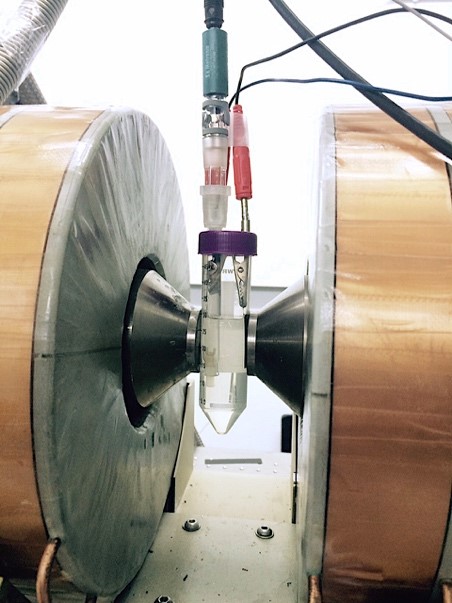- Universitat de València
- Coronado Miralles, Eugenio
- PDI-Catedratic/a d'Universitat
- Director/a d' Institut Universitari
- Abellan Saez, Gonzalo
- PDI-Titular d'Universitat
- Romero Pascual, Jorge
- PIT-Tecnic Sup Suport Projecte Investigacio
- Helena Prima García
The rapid increase in energy demand in recent years has accelerated the search for low-cost alternatives for energy storage and conversion. Among others, supercapacitors are an important type of energy storage devices since they store high energy density in short periods of time with the ability to repeat many charge-discharge cycles without losing efficiency. The appropriate selection of the electrodes is decisive in this type of device; the selected material must have a high specific surface, precise pore size distributions, thermal stability and stable electrochemical behaviour. Nanocomposite materials for energy storage applications are becoming of great interest due to the properties provided by its different constituents. Among possible nanocomposites that are being currently synthesized, those from layered double hydroxides (LDH) are attracting particular attention, especially carbon and metal oxides nanocomposites due to their potential applications in electrochemical devices such as supercapacitors. However, most new materials investigated turned out to be unfeasible from the commercial standpoint, due to its high cost and complexity of manufacture.
Researchers from University of Valencia have obtained new nanocomposite material with excellent supercapacitive properties by applying a galvanostatic step in the presence of an external magnetic field during the production process which renders a material much more active from the supercapacitive point of view. The nanocomposite is obtained through a simple, one-step and low temperature synthetic process, and from highly available and low cost materials. This material, electrochemically very active, shows an increase of capacitance much higher than those obtained without the application of the magnetic field (almost 600% more). These increases of capacitance are permanent and are still observed even in the absence of a magnetic field after their generation.
The new nanocomposite material is useful for all those devices that require materials with supercapacitive properties. Supercapacitors (or ultracapacitors) are mainly used for energy storage: "energy smoothing" and momentary-load devices, KERS devices used in vehicles, replacing batteries for specific cases, smaller applications like home solar energy systems, etc. Thus, it has an extremely wide range of potential applications in materials science, electronics, and nanotechnology.
The developed nanocomposite material has the following advantages:
- Low cost: chemical process of a single step with a single precursor, at low temperature, and using available, non-polluting and economical materials.
- Supercapacitor application: suitable properties for use in electrodes for batteries and supercapacitors, since it shows 600% more capacitance than materials obtained without the application of the magnetic field.
- Good cyclability: testing in cyclability is promising in terms of electrochemical and mechanical stability.
- Patent granted
Blasco Ibáñez Campus
C/ Amadeu de Savoia, 4
46010 València (València)













